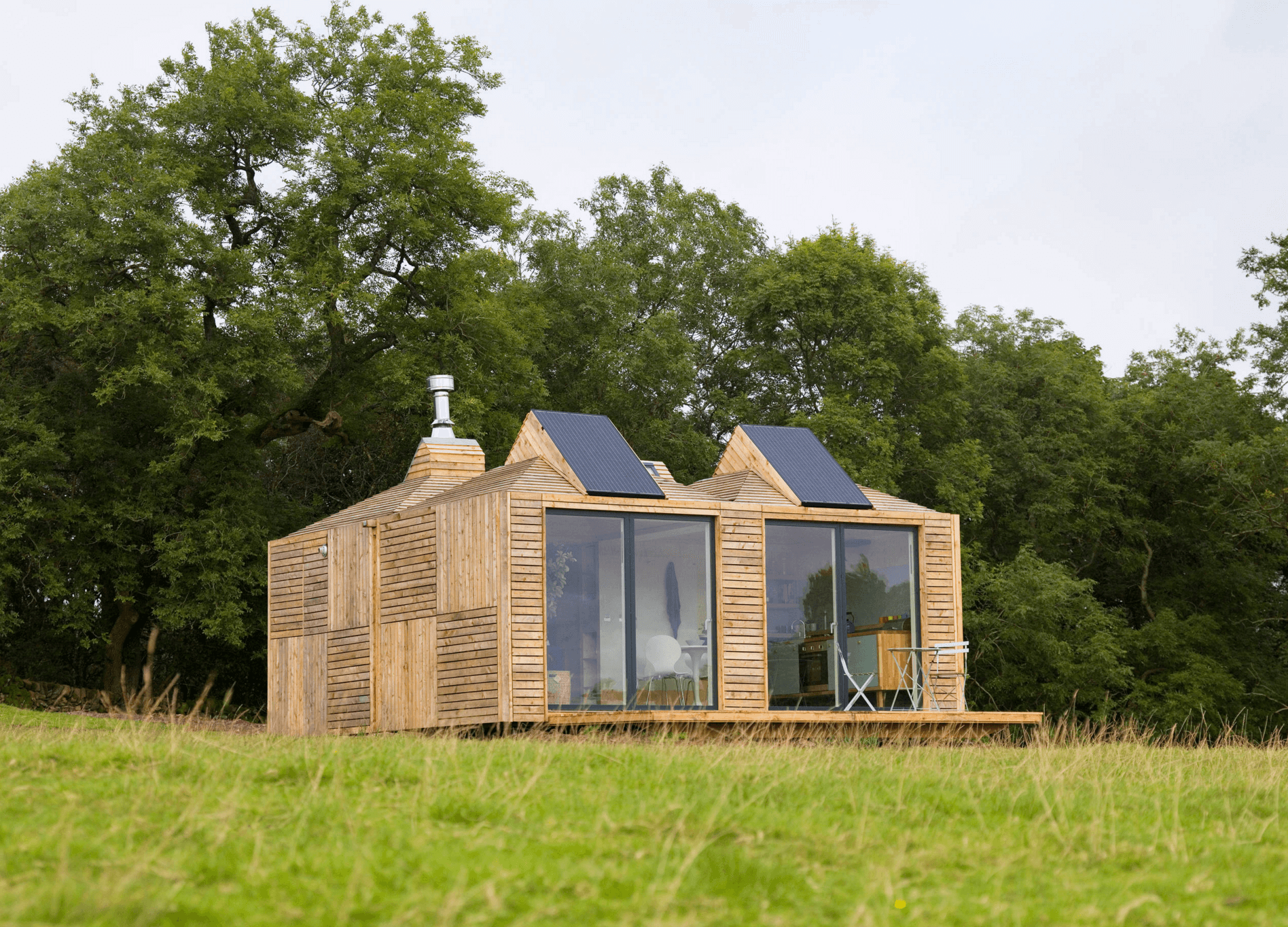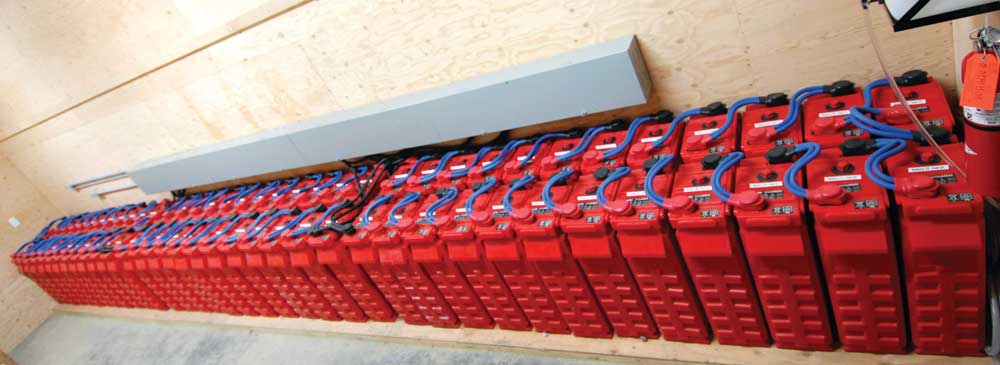
Independence from the electrical grid may sound like an attractive idea to some homeowners – the potential for positive environmental effects, greater energy security, and an end to bills from electric companies. In certain cases it can in fact be the most affordable option for powering your home. Homes considered “off-the-grid” or “off-grid” lack any connection to the utility grid and produce all required electricity on their own, generally from renewable sources and/or propane generators. Many off-the-grid homeowners have turned to solar power, used in conjunction with battery banks for energy storage, to power their homes.
Though a complete off-the-grid system can have a high price tag, it’s often much more affordable than extending the electrical grid to remote properties, an expense that can run up to $60,000 per mile. Homeowners interested in off-the-grid systems must consider several factors to find the most appropriate system to suit their energy needs.
Sizing Your Solar System
Once you’ve decided that off-grid solar may be a good option for you, you can determine the appropriate solar system size in a few steps.
Determine your current energy usage
If you currently live in a home that’s connected to the grid, check your electric bills for your monthly electricity usage.
Consider cutting down electrical consumption
When relying on off-grid energy sources, it is often practical to reduce your daily use of electricity. Though the average American home uses 900 kilowatt-hours of electricity each month, or 30 kWh per day, a small home powering a refrigerator, lights, satellite internet, and a couple of laptops can cut electricity usage to as little as 6 kWh per day.
Several online calculators are also available to help you project your electricity consumption based on the appliances that you plan to use, including those from Energy.gov and Affordable Solar.
Determine peak hours of sunlight in your region
In addition to your energy demands, the size of the solar system will be influenced by the number of peak hours of sunlight in your region. This can vary widely across the country and by season, but many online resources are available to determine this value for your location.
A home in Southern California aiming to produce 450 kWh per month, half of the national average, would require a solar system size of 4.5 kilowatts, while a home in the northeast with similar energy demands would require a 6-kilowatt system.
In 2017, homeowners can expect to pay between $3.00 and $4.00 per watt for their solar systems depending on region and various other considerations, pricing a 4.5-kilowatt system at around $15,500 and a 6-kilowatt system at around $20,000.

Selecting Your Batteries
A collection of batteries, or battery bank, is an essential component to any renewable off-grid system, and available batteries vary widely in price and expected lifespan. Lithium-ion batteries such as Tesla’s Powerwall have been attracting considerable attention recently, but they require a high initial investment, compatible equipment is expensive and rare, and their track record in off-grid systems has not yet been proven.
Nevertheless, these batteries boast longer cycle life, higher density, and improved resiliency, and they very well could begin to replace more traditional batteries in off-grid systems in the years to come.
Some customers prefer nickel-iron “Edison” batteries for their long lifespans, rated for up to 11,000 cycles, or 30 years of daily use. However, these batteries are one of the most expensive options, are inefficient to charge, and are offered by few U.S. suppliers. Nevertheless, nickel-iron batteries can work well for up to 50 years, and they could be the right choice for customers concerned primarily with battery lifespan.
Most popular batteries for off-grid solar systems
By far, the most popular batteries for off-grid systems are lead-acid batteries, which come in sealed models as well as three popular flooded types: golf cart batteries, L-16s, and industrial batteries.
Though golf cart batteries and L-16s must be replaced around the 5-year mark, many off-the-grid homeowners have found them to be a useful “training set” of batteries, allowing owners to adjust to the demands of flooded battery maintenance without the risk of damaging an expensive set. Industrial batteries have traditionally been favored by customers comfortable with proper battery maintenance and seeking a long-term solution.
Recently, sealed lead acid batteries have also been gaining popularity, particularly among those powering weekend or vacation homes who are attracted by the lack of required maintenance. Ultimately, your battery choice will depend on your budget and your priorities.

Sizing Your Battery Bank
Once you’ve settled on the type of battery you’re interested in, it’s time to determine the necessary size of your battery bank and the battery model that will best suit your energy demands. When calculating the size of your battery bank, it’s important to consider how many days you’d like your system to run without sunlight. Generally, systems are sized to run from 2 to 3 days without sunlight, but if you’re comfortable turning to a backup propane generator for power when the weather gets cloudy, you could opt for a smaller bank.
It is also important to consider the lowest ambient temperature that your batteries will experience during the colder months, as low temperatures can alter their effective capacity. Online calculators (like this one) are available to determine the total battery capacity you will need based on these factors and your daily energy requirements.
A home using 15 kWh per day, storing its batteries in conditions above 60 degrees Fahrenheit, and aiming to provide energy for 2 days without sunlight will require a total battery capacity of approximately 2100 Amp-hours.
Several companies manufacture industrial flooded lead-acid batteries specifically for use with solar systems. The Rolls battery from Surrette is seen as a premium product by many, and a wide variety of available capacities and voltages offer flexibility in designing a battery bank. A 2100 Amp-hour system composed of Rolls 4KS-21PS industrial batteries would require 12 batteries to be connected, totaling slightly over $12,000.
A system of the same size composed of Rolls S-530 L-16 batteries would cost around $8,000. Despite the higher up-front price, the industrial option provides considerably more kilowatt-hours over its lifetime at the rated depth of discharge, and lifetime cost per kilowatt-hour is half of that for the L-16 option.
Putting Things Together
Based on these calculations, a Southern Californian home with electricity consumption at 450 kWh/month, half of the national average, can expect to pay at least $26,000 for a solar system and battery bank before any federal or state incentives are applied. The cost of monitoring equipment, installation, and a backup generator could easily add another $5,000 to this estimate.
Prices vary widely based on location, energy demands, and the type of equipment you choose to best fit your needs, and numerous online resources are available to find more accurate estimates for your home. Off-grid customers can also take advantage of the 30% federal tax credit, as well as various state incentives. However, because these homeowners are not connected to the electrical grid, net metering is not available to them.
Due to the many complexities of these systems, many homeowners opt to work with solar providers that specialize in off-the-grid solar and provide all of the required components.
Solar.com can help connect you with the best off-the-grid installer for your project and find you the best possible deal through our competitive bidding system.
You can begin to learn more by entering your address on our homepage.


